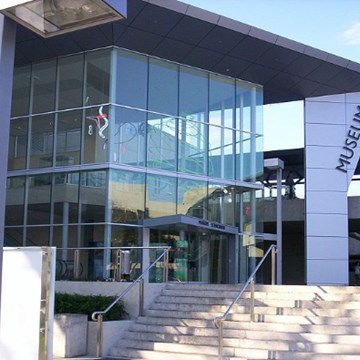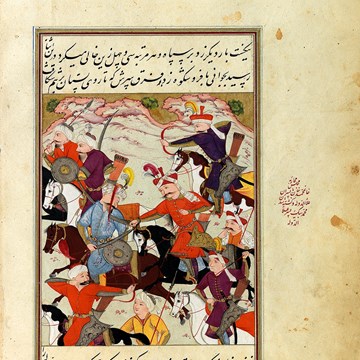National Museum in Gdansk
Muzeum Narodowe w Gdańsku
The National Museum in Gdansk is located in a former Franciscan monastery, built in the late Gothic style in the first half of the 15th century. When the Reformation took over in Gdansk, the monks left the town, handing over the monastery to the town authorities in 1556, ‘solely for academic purposes’. From 1643, the building provided accommodation for the Town Council Library and the Academic Gymnasium. The ground-floor rooms originating from these times are: the chapter-house, library, large and small refectory, and the cloisters skirting the monastery garden.
The idea of creating a museum took shape in the mid-19th century. The sculptor Rudolf Freitag lived and worked in the building from 1845 to 1868. During this period, he collected antique items and applied to the Prussian authorities for permission to open a museum in what was then a deteriorating historical building. In 1872, the building opened as the Town Museum, with its collections augmented by the holdings of the Museum of the Artistic Crafts.
The works of art and artistic crafts held at that time and added in the immediately following decades continue to constitute the essential part of the Gdansk museum collections.
The works added consist mainly of collections bequeathed or purchased. Gdansk merchant Jacob Kabrun (1759-1814) bequeathed a collection of Netherlands paintings, European drawings and graphics which form the basis of the art department. Churches provided the Mediaeval art, and local organisations, mainly the guilds, supplied much of the artistic crafts. Gifts from Gdansk and the Pomorse families were further significant contributions to the museum’s holdings.
Towards the end of the Second World War, the building was badly damaged (65 per cent). The collections had previously been evacuated, but a considerable number of works vanished. The first post-war exhibition was opened in 1948 and, after this time, the collections grew steadily, with purchases from state funds and gifts from private persons.
Today, the collections of older art are presented in their original building at Torunska 1 street, collections of modern art in the Abbots’ Palace in Gdansk – Oliwa. The Ethnography Branch is located in the Abbots’ Granary in Gdansk – Oliwa. The National Anthem Museum is housed at Bedomin, in the former home of Jozef Wybicki, the author of the Polish National Anthem. The Gallery of Photography, another branch, is located in Gdansk.
The most significant and valuable masterpiece in the collections of the National Museum in Gdansk is Hans Memling’s triptych, the ‘Last Judgement’.
Exhibitions and events
We don't have anything to show you here.
Educational programs
We don't have anything to show you here.
Collections
We don't have anything to show you here.












